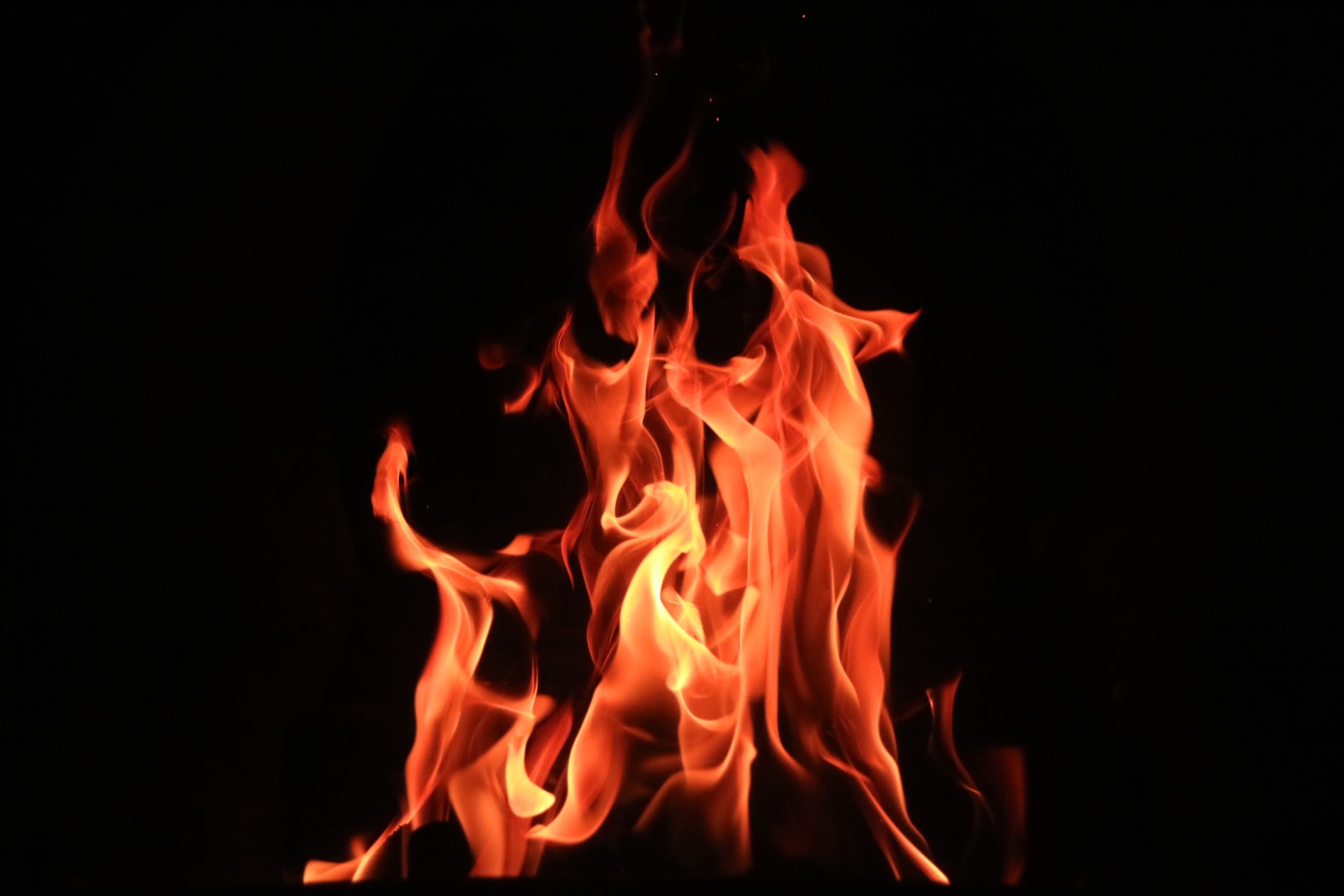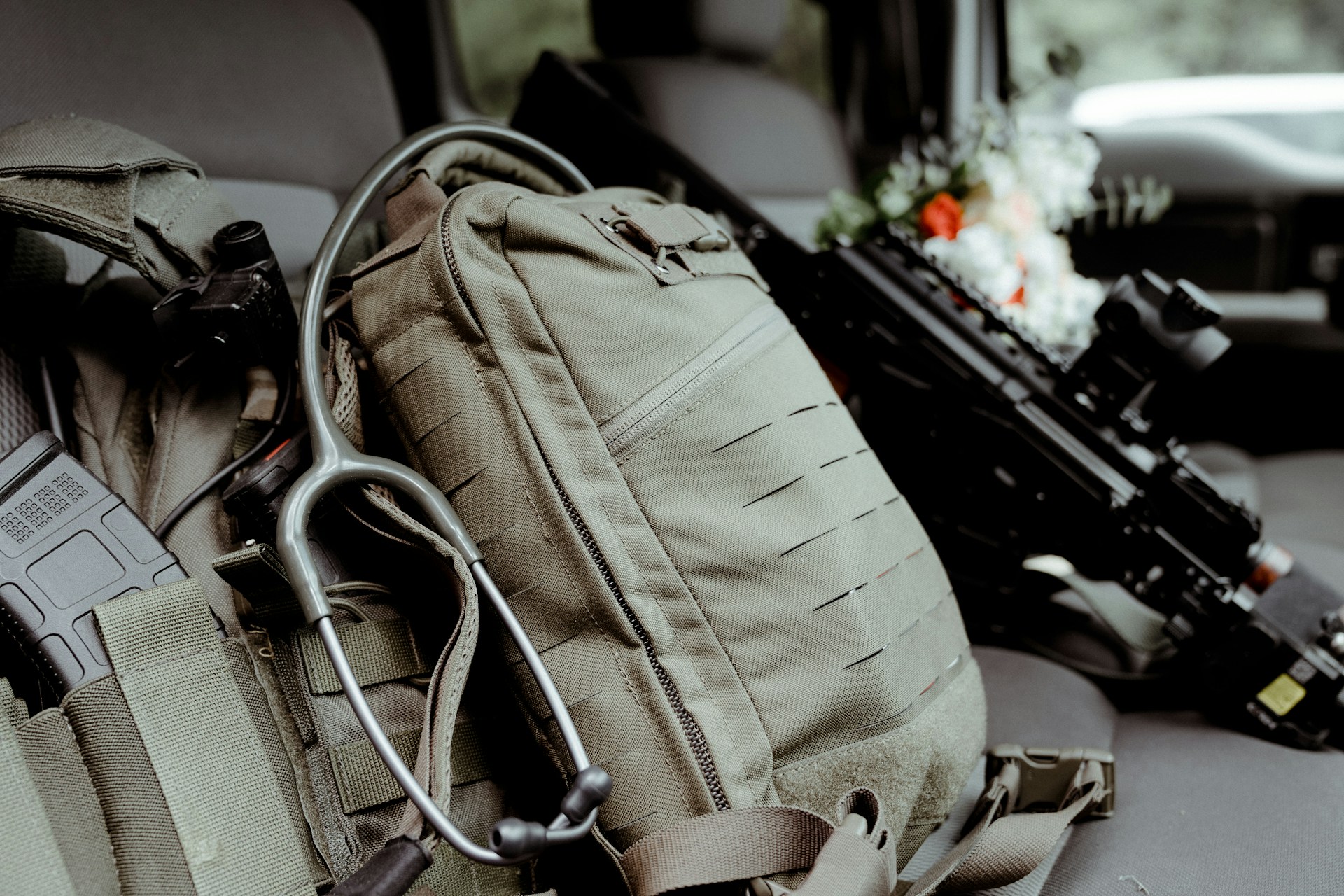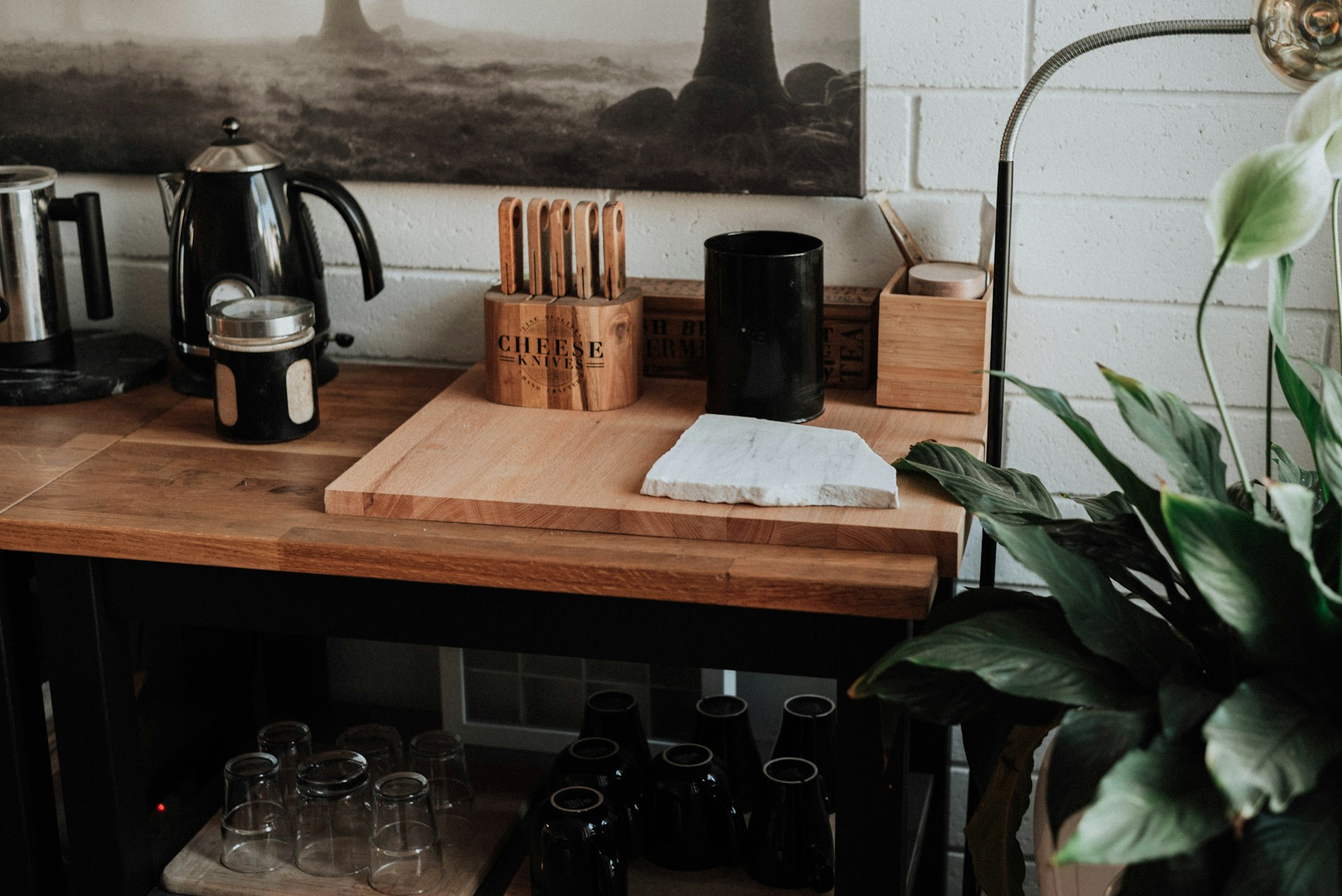Off The Grid
Preventing Home Fires: Essential Safety Measures

Today, I want to talk about something that’s as important in the home as it is out in the wild – fire safety. Now, I’ve danced with fire under the stars countless times, but let me tell you, it’s a whole different ball game when it’s your home at stake. So, let’s dive right in and discuss some essential safety measures to prevent home fires.
Alarms
First and foremost, let’s talk about smoke alarms. These little devices are your first line of defense against a home fire. I’ve seen people skimp on these, thinking they’ll smell the smoke in time. But trust me, when you’re deep in slumber, a smoke alarm is what you need. Install one on every level of your home, inside bedrooms and outside sleeping areas. Test them once a month, and replace the batteries yearly. Remember, a non-working smoke alarm is as good as no smoke alarm.
Heating
Next up, let’s discuss heating. Whether it’s a furnace, a fireplace, or a portable heater, anything that generates heat can start a fire if not handled properly. Keep anything that can burn at least three feet away from heating equipment. Have your chimney and heating systems serviced and cleaned annually by a professional. And always turn off portable heaters when leaving the room or going to bed.
Kitchen
Now, onto the kitchen. It’s not just for whipping up your favorite chili or brewing a strong cup of joe; it’s also the place where most home fires start. Never leave cooking unattended, keep flammable items away from the stove, and always have a fire extinguisher within reach. Remember, a pot lid or baking soda can smother a small grease fire. Never use water; it’ll only make things worse.
Electrical fires
Electrical fires are another common cause of home fires. Overloaded circuits, faulty wiring, and outdated appliances can all spark a disaster. Don’t overload outlets or extension cords. If your lights flicker or circuits frequently trip, get your home’s electrical system checked by a licensed electrician. And always unplug appliances when they’re not in use.
Candles
Candles may set the mood or keep the dark at bay when the power’s out, but they can also be a fire hazard. Keep candles at least 12 inches away from anything that can burn, and always blow them out before leaving the room or going to bed. Consider using battery-operated flameless candles. They’re much safer, and some even flicker like the real thing.
Cigarettes
Lastly, let’s talk about cigarettes. If you smoke, do it outside. Most deaths result from fires that started in living rooms, family rooms, and dens. Keep your butts and ashes in a sturdy, deep ashtray that won’t tip over. And douse them with water before you toss them out.
Remember, folks, fire doesn’t discriminate. It can happen to anyone, anywhere. But with these safety measures in place, you can significantly reduce the risk of a home fire. So take the time to implement these steps. After all, your home is your castle, your sanctuary. And like the wilderness, it deserves to be respected and protected.
Stay safe, stay prepared, and remember, the key to surviving isn’t just about reacting to danger, but preventing it. Until next time, this is Jack Morgan, signing off.

Off The Grid
10 Things to Pack in a Get-Home Survival Bag

A get-home bag is one of the most overlooked but most valuable pieces of emergency gear you can own. It is not designed to help you survive for days in the wilderness. Instead, its purpose is simple. It helps you get home safely during an unexpected crisis. Whether you are stuck at work during a blackout, stranded on the road in a storm, or forced to walk when transportation shuts down, a well-packed get-home bag can make the difference between stress and confidence.
Here are ten essential items to include so you can get home quickly and safely no matter what happens.
1. Water Bottle or Hydration Pouch
Staying hydrated is essential when you may need to walk long distances. A durable water bottle or collapsible hydration pouch works well because you can fill it anywhere before starting your journey. Dehydration slows reaction time and drains energy, so water should always be at the top of your list.
2. Energy Bars or Quick Snacks
You need steady energy to stay focused. High-calorie snacks like protein bars, trail mix, or peanut butter packets keep your body fueled without taking up space. They require no cooking and last a long time in any weather.
3. Compact Flashlight
A small LED flashlight helps you navigate safely if darkness hits. Power outages, tunnels, garages, and unlit streets can become dangerous without proper light. Pack a lightweight flashlight and keep it accessible.
4. Spare Batteries
A flashlight or portable radio is useless without backup power. Include a small set of extra batteries to keep your gear running for hours. Store them in a plastic bag so moisture cannot reach them.
5. Multi-Tool
A compact multi-tool gives you pliers, a blade, screwdrivers, scissors, and other essentials in a single device. It is one of the most versatile items you can carry and handles small repairs, cutting tasks, and emergency adjustments with ease.
6. Emergency Mylar Blanket
A mylar blanket helps you retain body heat when temperatures drop. It weighs almost nothing and folds into the size of a wallet. Whether you are dealing with cold weather or unexpected snow, this simple item prevents heat loss and keeps you more comfortable.
7. Small First-Aid Kit
Minor injuries can become major setbacks during an emergency walk home. A basic kit with bandages, antiseptic wipes, gauze, adhesive tape, and pain relievers can prevent infections or make a long walk safer and less painful.
8. Map of Your Area
Do not rely only on your phone. Battery failure, poor signal, or damaged devices can leave you without navigation. A simple paper map of your local routes allows you to find alternate paths home if roads or bridges are blocked.
9. Lightweight Rain Poncho
Weather can change without warning. A poncho keeps you dry and warm, prevents hypothermia, and protects your gear. Wet clothing quickly drains your energy and slows your movement, so staying dry is a priority.
10. Cash
Digital payments fail during power outages or network problems. Small bills can help you buy water, food, or transportation when cards do not work. Even a modest amount of cash gives you options that many people forget about in emergencies.
Final Thoughts
A get-home bag is not a luxury. It is a simple, practical tool that protects you when the unexpected happens. These ten items fit easily into a small backpack and can get you home safely through power failures, storms, traffic shutdowns, or regional emergencies. The goal is not to carry everything. The goal is to carry only what matters most. Once you assemble your bag, keep it in your car or workplace so you are ready at a moment’s notice.
Off The Grid
10 Foods That Could Save Your Life When Crisis Hits

When a real emergency strikes, the first thing most people lose is access to fresh food. Storms shut down roads, power outages spoil everything in the refrigerator, and grocery shelves empty faster than anyone expects. Having the right foods stored can turn a dangerous situation into something you can manage calmly. The key is choosing items that last a long time, do not require refrigeration, and can give your body the energy it needs when conditions get tough.
Here are ten simple, affordable foods that could literally keep you alive when everything else disappears.
1. Canned Beans
Canned beans are one of the most complete emergency foods on the planet. They are packed with protein, fiber, and slow-burning carbohydrates. They can be eaten cold right out of the can if there is no power. Black beans, kidney beans, chickpeas, and pinto beans all work the same way.
2. Rice
Rice is a survival classic because it lasts for years, stores easily, and gives steady energy. White rice stores longer than brown rice, but both are excellent. Combined with beans, rice becomes a complete meal that keeps you full and focused during tough situations.
3. Peanut Butter
Peanut butter is calorie-dense, shelf-stable, and requires zero preparation. A single spoonful provides fat, protein, and fast energy. It can stay good for months after opening if stored in a cool place. In any emergency, peanut butter becomes a go-to survival powerhouse.
4. Canned Meat
Tuna, chicken, salmon, and Spam all offer long-lasting protein that does not require cooking. Canned meat keeps hunger away and helps your body stay strong when facing stress. Always keep a few cans in your emergency kit or pantry.
5. Oats
Oats are cheap, filling, and versatile. You can eat them hot if you can boil water or cold by soaking them for a few minutes. They give long-lasting energy and help keep your stomach comfortable during stressful times.
6. Shelf-Stable Milk
Powdered milk or boxed shelf-stable milk are lifesavers when refrigeration is gone. They provide calcium, protein, and comfort. Powdered milk lasts the longest and takes up the least space, making it an ideal survival-food staple.
7. Pasta
Pasta stores extremely well and is easy to prepare. Even if you cannot fully boil it, soaking pasta in hot water will make it soft enough to eat. It is a reliable way to stretch meals and keep energy levels steady.
8. Honey
Honey lasts forever. It never spoils and can still be eaten decades later. It boosts energy, soothes sore throats, and adds flavor to otherwise bland survival meals. A small jar goes a long way and can lift morale when days feel long and stressful.
9. Canned Vegetables
Fresh produce is the first thing to disappear during a crisis. Canned vegetables fill that gap with vitamins and hydration. Corn, peas, mixed vegetables, and green beans all store well and give your body the nutrients it normally gets from fresh groceries.
10. Water
No food matters without water. Store at least one gallon per person per day. Bottled water, water jugs, and water purification tablets all belong in your emergency kit. If you have space, keep extra. When the tap stops working or becomes unsafe, clean water becomes the most valuable survival item you own.
Final Thoughts
These ten foods are not fancy and they are not expensive, but they can keep you alive when normal life breaks down. Building a simple survival pantry does not require fear or extreme prepping. All it takes is a few smart choices, a little extra storage space, and the peace of mind that comes with knowing you can take care of yourself no matter what happens outside.
Off The Grid
10 Survival Items Hiding in Your House Right Now

Your kitchen drawer might just be the best survival kit you never built
You don’t need to live in the wilderness or have a fancy bug-out bag to be prepared for an emergency. Most people already own half the tools they’d need to survive they’re just scattered across kitchen drawers, garages, and bathroom cabinets. The secret is knowing what you have and how to use it creatively. Here are ten everyday items that can turn into life-saving tools when things go sideways.
1. Garbage Bags
A simple trash bag can do more than hold waste. Use it as a rain poncho, emergency shelter, ground tarp, or even a water collector. Heavy-duty contractor bags can be stuffed with leaves for insulation or turned into makeshift sleeping bags.
2. Aluminum Foil
Foil is basically metal in your pocket. Wrap it around food to cook over open flame, fashion it into a bowl or wind guard, or use it to reflect heat toward your shelter. You can even fold a small square into a mirror for signaling.
3. Shoelaces
Strong, lightweight, and easy to find. Shoelaces can tie gear, hang food from trees, fix broken zippers, or become makeshift tourniquets. In survival situations, cordage is priceless and you’re probably wearing some right now.
4. Bleach
Unassuming but powerful, regular unscented bleach can disinfect surfaces and purify water. Add just 8 drops per gallon of clear water, mix well, and wait 30 minutes. (If it smells faintly of chlorine afterward, it’s safe to drink.)
5. Coffee Filters
Coffee filters aren’t just for caffeine lovers. They make excellent pre-filters for dirty water, help start fires when dry, and can even work as disposable plates or wound covers. Lightweight and cheap, they’re worth tossing in any emergency bag.
6. Duct Tape
If something’s broken, duct tape can probably fix it. Patch holes, secure splints, seal windows, or twist it into rope. It’s waterproof, durable, and compact a survival MVP in any scenario.
7. Plastic Bottles
Empty water bottles are more useful than they look. Use them to carry and purify water, as makeshift funnels, or to store dry goods. Fill one with water and set it in sunlight for a few hours the UV rays can kill bacteria naturally.
8. Vaseline and Cotton Balls
Together, they’re an instant fire starter. Coat a few cotton balls in petroleum jelly and store them in a small bag. Even in rain, they’ll ignite easily and burn long enough to get a fire going.
9. Paper Clips
A tiny metal multitool. Paper clips can pick locks, fix zippers, clean small gear, or act as hooks and fish lures. They’re proof that even office supplies can have survival value.
10. Hand Sanitizer
Besides keeping your hands germ-free, sanitizer with alcohol doubles as fire fuel. A small squeeze on kindling makes damp wood catch flame faster. Keep a travel bottle in your car or pocket, it’s hygiene and ignition in one.
Final Thought
Survival isn’t about buying gear it’s about using what’s already around you. The next time you open a junk drawer, look again. You might not see a mess; you might see a ready-made emergency kit hiding in plain sight. Being resourceful isn’t just thrifty, it’s one of the best survival skills you’ll ever have.
-

 Tactical2 years ago
Tactical2 years ago70-Year-Old Fends Off Intruder with Lead-Powered Message
-

 Tactical2 years ago
Tactical2 years agoVape Shop Employee Confronts Armed Crooks, Sends Them Running
-

 Preparedness1 year ago
Preparedness1 year agoEx-Ballerina’s Guilty Verdict Sends Tremors Through Gun-Owner Community
-

 Off The Grid2 months ago
Off The Grid2 months ago10 Foods That Could Save Your Life When Grocery Shelves Are Empty
-

 Preparedness1 year ago
Preparedness1 year agoGood Samaritan Saves Trooper in Harrowing Interstate Confrontation
-

 Preparedness1 month ago
Preparedness1 month ago5 Things You Should Always Carry During a Winter Storm
-

 Preparedness6 months ago
Preparedness6 months agoHow Much Gasoline Should You Store for Emergencies?
-

 Nature and Wildlife2 months ago
Nature and Wildlife2 months ago10 Survival Skills You Should Learn Before You Need Them